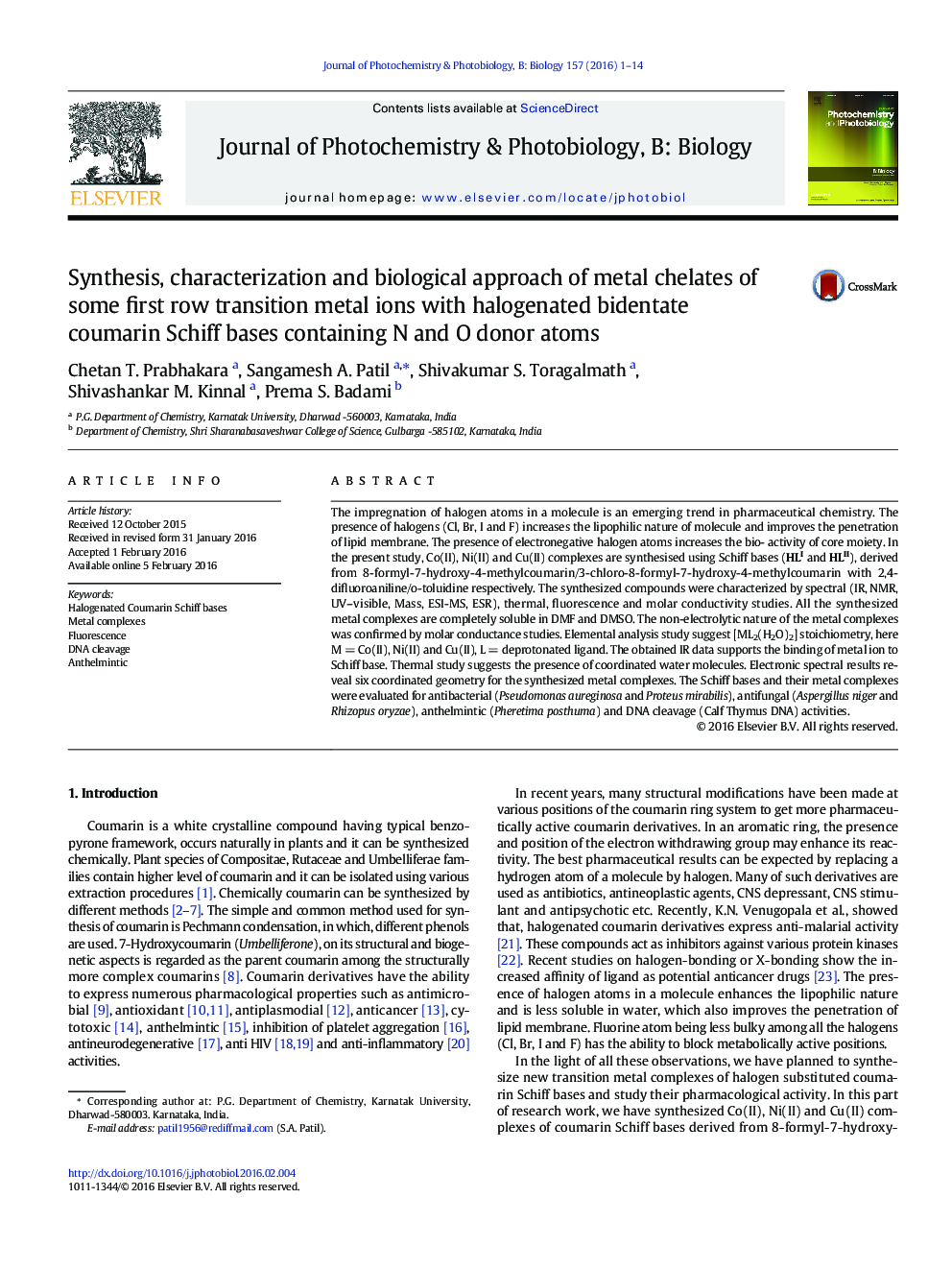| کد مقاله | کد نشریه | سال انتشار | مقاله انگلیسی | نسخه تمام متن |
|---|---|---|---|---|
| 29365 | 44372 | 2016 | 14 صفحه PDF | دانلود رایگان |

• Synthesis and depiction of halogenated coumarin Schiff base metal complexes.
• Characterization of synthesized compounds using various spectroscopic techniques.
• Confirmation of quenching property by fluorescence emission study.
• Cyclic voltammogram of Cu(II) complex suggests quasi-reversible one electron oxidation.
• The biological activity of metal complexes were significantly higher than the non-metal compounds.
The impregnation of halogen atoms in a molecule is an emerging trend in pharmaceutical chemistry. The presence of halogens (Cl, Br, I and F) increases the lipophilic nature of molecule and improves the penetration of lipid membrane. The presence of electronegative halogen atoms increases the bio- activity of core moiety. In the present study, Co(II), Ni(II) and Cu(II) complexes are synthesised using Schiff bases (HLI and HLII), derived from 8-formyl-7-hydroxy-4-methylcoumarin/3-chloro-8-formyl-7-hydroxy-4-methylcoumarin with 2,4-difluoroaniline/o-toluidine respectively. The synthesized compounds were characterized by spectral (IR, NMR, UV–visible, Mass, ESI-MS, ESR), thermal, fluorescence and molar conductivity studies. All the synthesized metal complexes are completely soluble in DMF and DMSO. The non-electrolytic nature of the metal complexes was confirmed by molar conductance studies. Elemental analysis study suggest [ML2(H2O)2] stoichiometry, here M = Co(II), Ni(II) and Cu(II), L = deprotonated ligand. The obtained IR data supports the binding of metal ion to Schiff base. Thermal study suggests the presence of coordinated water molecules. Electronic spectral results reveal six coordinated geometry for the synthesized metal complexes. The Schiff bases and their metal complexes were evaluated for antibacterial (Pseudomonas aureginosa and Proteus mirabilis), antifungal (Aspergillus niger and Rhizopus oryzae), anthelmintic (Pheretima posthuma) and DNA cleavage (Calf Thymus DNA) activities.
Synthesis of Schiff basesFigure optionsDownload as PowerPoint slide
Journal: Journal of Photochemistry and Photobiology B: Biology - Volume 157, April 2016, Pages 1–14